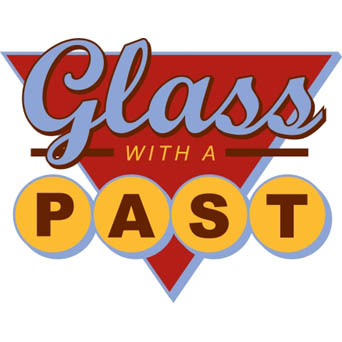Q & A Mondays are answers to reader questions submitted via email or social media. All personal information has been removed for privacy reasons and messages have been edited for clarity. You may submit your own questions through the About/Contact page.
Q: I am using the precious metal ceramic lustres. I’m still testing at the various temperature, but getting nowhere so any advice would be most welcome.
A: No problem. I love those ceramic lusters. The trick with these lusters is the temperature. They mature at VERY low temperatures, so you should do all of the slumping, cold working and everything else before you apply them. Make sure the glass is squeaky clean, any oils or finger prints will ruin them. They also are very prone to contamination, so use one brush per color and don’t mix them up.
The metallics and opals mature at cone 020 which is approximately 1250F.
Because they are a ceramics product, the temperatures are listed in cone’s, which have to be converted to temperatures. My favorite cone conversion chart is this one:
http://www.clay-king.com/kilns/pyrometric_cone_temperature_chart.html
You can see way down at the bottom where it shows Metallic Lusters and the temperatures in Farenheit.
I paint on the lusters (wear a fume respirator) and then fire very slowly to 1225-1250 and hold for 1 minute, then cool slowly back to room temperature.
I hope that helps!
Jodi
Related Knowledgebase: Gold and Palladium Lusters on Glass
Q: Hi, Jodi,
I’m thrilled to have a resource that might help me do something with a broken vase. It belonged to a friend’s mom, so age-wise it’s possibly 70 years old, and was broken by misadventure, a chunk taken out of one side. Friend would like to make it into something else to remember her mom.
It is clear glass with crackling, approximately 7″ tall, no marks on the bottom and no sense of iridescence. It has 4 round medallions on the outside, approx. 2″ in diameter, that are reasonably crisp in pattern. There are no chips in the top edge, which is very nearly 3 mm thick.
In your knowledge base I did read about seeing what happens in a firing. I included some shards in a full-fuse load (1450 degrees F). The crackle disappeared. The stacks of 2 pieces are firmly fused to each other but not melted and rounded as art glass would be. And the pieces seem to show some iridescent or even fogging with the firing. So I’m really not sure if it’s tempered glass or not!
What might I do with this? Here are my more specific questions:
1. Might I be able to use a Dremel and remove the medallions intact, or is it all maybe too fragile?
2. If we fire shards to round off the sharp edges, can holes be drilled for hanging as for a wind chime?
3. Friend is talking about “maybe adding some color.” I know better than to try and add some other kind of glass to it! What about using Glassline paints for a few small flowers? And would I fire the pieces with paint on top as if it wasn’t there, and in a subsequent slump?
Wow. Lots of questions! Any guidance you might give me here would be very much appreciated!
Thanks
What a great project, I’m so happy that you are willing to give it a try.
Here are some thoughts:
1. It won’t be tempered or float. Those technologies didn’t exist when the vase was made, and the medallions tell us that it is blown into a mold, which is more probably a form of art glass or a borosilicate glass.
2. Yes, you should be able to cut out the medallions. I usually cut the entire vase into pieces and then cut off the extra to separate the interesting bits, but a dremel would work if you are patient. The crackle does present an issue, as it may make the entire vase more inclined to breakage. The issue there is firing it hot enough to ‘heal’ the crackle will most likely flatten out the medallions. So, I’d try the dremel on an unfired chip and see what happens.
3. Color. This one is tricky since we don’t know what kind of glass it is. Glassline might work, I’d give that a test chip as well. It it doesn’t, there are some other options available, depending on how much your friend wants to spend.
Related Knowledgebase: Fusing with Mystery Glass
Reusche enamels – these are low fire (slump) and are gorgeous colors, but kind of expensive
Ceramic Lusters – these colors are more like water color in vibrancy, although there are metallics as well. These fire at even lower temperatures (1250)
Related Knowledgebase: Gold and Palladium Lusters on Glass
China Paints or Vitreous Paints – these fire at oven temperatures
Mica lusters – the glass would have to be acid etched first, then mica and fired to slump temperatures
Related Knowledgebase: Mica Painting Tips
4. Holes – Yes, you should be able to drill holes, be very gentle. The firing will actually help with that, as the cracks from the crackle will be fused back together.
Related Knowledgebase: Drilling Holes: Drill Press or Dremel?


